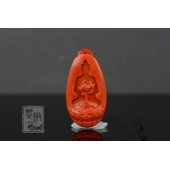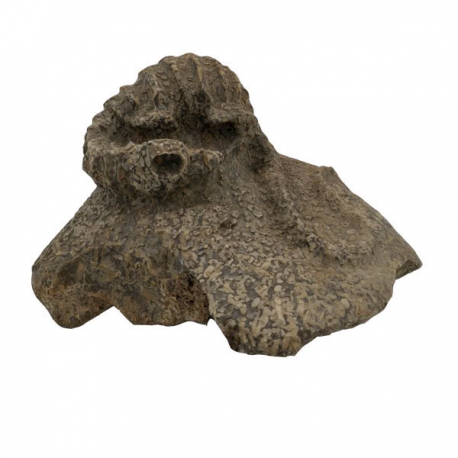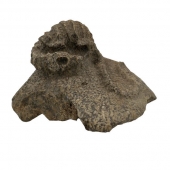恐龙化石
- 编 号:783844
- 销售状态:待售(不可在线交易)
- 库 存: 1
- 售 价:议价
(平台服务时间:周一到周五 9:00-17:00)
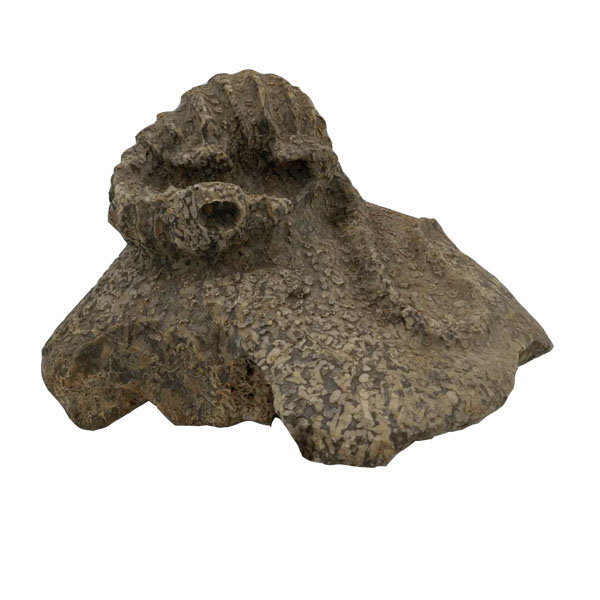
- 资质:
- 评分:
1分 2分 3分 4分 5分 6分 7分 8分 9分 10分 7分
- 印象:
- 经营时间:2022年
- 展厅面积:1500平米
- 地 区:重庆-渝北
| 创作年代 | 其他 | ||||
|---|---|---|---|---|---|
| 作品分类 | 杂项- 石刻-近现代石刻 | 品相 | 全品 | 器型 | 其它 |
| 题材 | 动物 | ||||
| 作品标签 | |||||
| 适用空间 | |||||
作品介绍
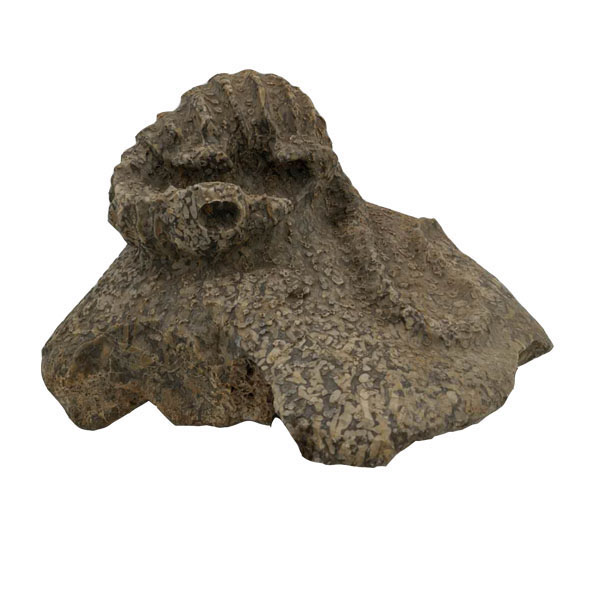
恐龙出现在三叠世纪,繁盛于侏罗纪,灭绝于白垩纪。由于中生代气候温暖湿润,四季如春,到处生长着高大的蕨类植物,所以很适合爬行动物的生存。尤其是各种恐龙,它们迅速繁衍生殖,遍布地球,品种达到数千种,控制了当时的海陆空三大栖息环境,称霸地球长达1.5亿年之久。恐龙是在地球上生活过得最成功动物物种之一。
那么化石是什么呢?化石就是生活在遥远年代的生物遗体或遗迹变成了石头。在漫长的地质年代里,地球曾经生活过无数生物,这些生物死后的遗体或是生活时遗留下来的痕迹,被当时的泥沙掩埋起来,在随后的岁月中,这些生物遗体中的有机质分解殆尽,坚硬的部分如外壳、骨骼、枝叶等与包围在其周围的沉积物一起经过石化变成了石头。但是,它们原来的形态、结构甚至一些细微的内部构造却依然保留着。同样,那些生物生活时留下的痕迹也可以这样保留下来。我们把这些石化了的生物遗体、遗迹就称为化石。化石的作用很大,我们可以从化石中看到古代动物、植物的样子,从而推断出古代动植物的生活情况和生活环境,也可以推断出埋藏化石的地层形成的年代和经历的变化,以及生物从古至今的变化,等等。
恐龙化石,是指恐龙死后身体中的软组织因腐烂而消失,骨骼(包括牙齿)恐龙死去并很快地被沉积物或水下泥沙所覆盖时,石化过程就开始了。这些沉积物中含有细小的颗粒,会在尸体表面形成一层松软的覆盖物。硬体组织沉积在泥沙中,处于隔绝氧气的环境下可隔绝氧气,抑制微生物的分解,经过几千万年甚至上亿年的沉积作用,骨骼完全矿物化而得以保存。
恐龙化石是如何形成的呢?恐龙拥有坚硬的部分,如壳、牙、骨或木质组织。恐龙在死后如果立即被毁灭,它们的部分身体被压碎、腐烂或严重风化,就可能减小恐龙变成化石的可能性。恐龙死后,身体中的软组织因腐烂而消失,坚硬的部分沉积在泥沙之中,被许多细小的颗粒覆盖,这条“毯子”能保护恐龙们的尸体,免受食腐动物的侵袭,隔绝氧气,也可抑制微生物的分解。恐龙的骨骼是由矿物质构成的。矿物质不会分解,并重新结晶,变得更坚硬。随着上面沉积物的不断增厚,遗体越埋越深,最终石化,成为化石。但只有在少数、特殊、绝对稳定的环境下,才能形成恐龙化石。
恐龙化石对研究恐龙形态学、分类学和系统演化具有重要意义,它为了解中生代地理及全球古动物地理区系的形成提供重要信息。对展现史前生态景观,研究远古时期地理、气候,恐龙种属的繁衍、迁徙、灭亡及地球陆地板块漂移学说,提供了珍贵的实物资料和重要科学信息。
在诸多藏品中,恐龙化石都是恐龙蛋、成年大型恐龙骨骼化石居多,但发现完整恐龙宝宝,小型恐龙化石的案例极其罕见,形成条件又极为苛刻。这件恐龙化石在保存上非常完美,立体形态非常难得,骨骼纹路清晰可见,动作造型生动活灵活现 。这种恐龙化石是世间仅存不可多得的珍品、孤品,非常稀有罕见,具有不可估量的历史研究考古价值和收藏价值!
英语翻译:
Dinosaurs appeared in the Triassic, flourished in the Jurassic and extinct in the Cretaceous. Because of the warm and humid climate of the Mesozoic, the four seasons are like spring, and there are tall ferns growing everywhere, so it is very suitable for the survival of reptiles. Dinosaurs, in particular, multiplied and reproduced rapidly throughout the earth, with thousands of species. They controlled the three major habitats of land, sea and air, and dominated the earth for 150 million years. Dinosaurs are one of the most successful animal species on earth.
So what are fossils? Fossils are biological remains or relics that lived in distant times and turned into stones. In the long geological age, the earth once lived countless creatures. The remains of these creatures, or traces of their lives, were buried by the sediment at that time. In the following years, the organic matter in these creatures was completely decomposed, and the hard parts such as shells, bones, branches and leaves, together with the sediments surrounding them, were petrified and turned into stones. 。 However, their original form, structure and even some subtle internal structure are still retained. Likewise, the traces left by living creatures can be preserved in this way. We call these fossilized biological remains and remains fossils. Fossils play a very important role. We can see the appearance of ancient animals and plants from fossils, and infer the living conditions and living environment of ancient animals and plants. We can also infer the age and experience of formation of buried fossils, and the changes of organisms from ancient to present, and so on.
Dinosaur fossils refer to the process of fossilization that begins when soft tissues in the body of a dinosaur disappear from decay and bones (including teeth) die and are quickly covered by sediment or underwater sediment. These sediments contain fine particles that form a soft covering on the surface of the corpse. Hard tissue deposited in sediment can isolate oxygen and inhibit the decomposition of microorganisms. After tens of millions of years or even hundreds of millions of years of deposition, bones are completely mineralized and preserved.
How did dinosaur fossils form? Dinosaurs had hard parts, such as shells, teeth, bones or woody tissues. If dinosaurs were destroyed immediately after death, some of their bodies would be crushed, decayed or severely weathered, which might reduce the possibility of dinosaurs becoming fossils. After the death of the dinosaurs, the soft tissues disappeared due to decay. Hard parts were deposited in the sediment and covered by many tiny particles. This blanket could protect the bodies of the dinosaurs from the attack of decaying animals, isolate oxygen, and inhibit the decomposition of microorganisms. Dinosaur bones are made of minerals. Minerals do not decompose and recrystallize, becoming harder. With the increasing thickness of the sediments above, the bodies buried deeper and deeper, and finally became fossils. But dinosaur fossils can only be formed in a few, special and absolutely stable environments.
Dinosaur fossils are of great significance to the study of dinosaur morphology, taxonomy and phylogenetic evolution. They provide important information for understanding Mesozoic geography and the formation of global paleozoogeographic flora. It provides valuable material data and important scientific information for presenting prehistoric ecological landscape, studying the geography and climate of ancient times, the reproduction, migration, extinction of dinosaur species and the theory of the drift of the earth's land plate.
Among many collections, dinosaur fossils are mostly dinosaur eggs and adult large-scale dinosaur skeleton fossils, but the discovery of complete baby dinosaurs and small dinosaur fossils is extremely rare, and the formation conditions are extremely harsh. This dinosaur fossil is perfectly preserved. Its three-dimensional shape is very rare. Its skeletal lines are clearly visible and its movements are vivid and vivid. This dinosaur fossil is rare and rare in the world. It has immeasurable archaeological value and collection value for historical research.

 黄琦
黄琦 贾平西
贾平西 测试用艺术
测试用艺术 郭军
郭军